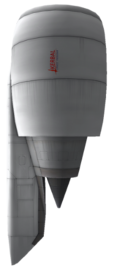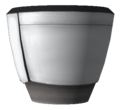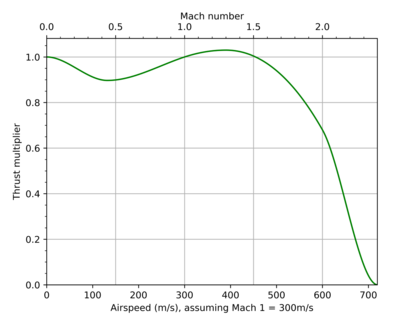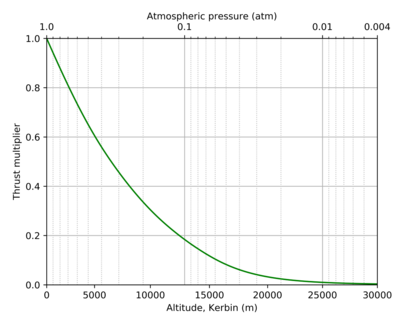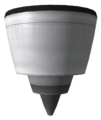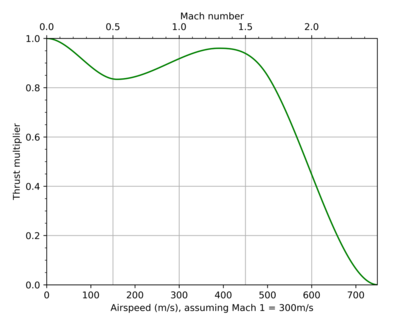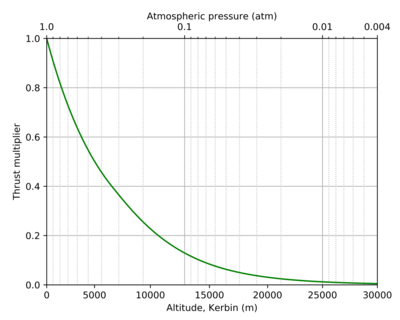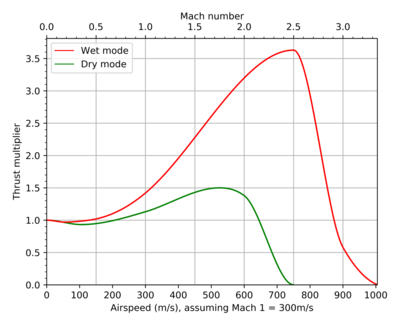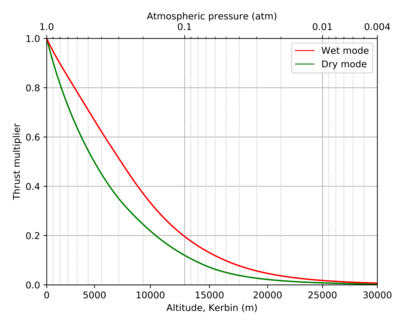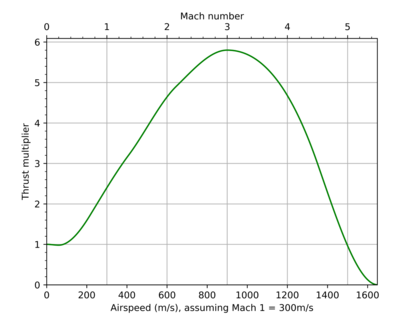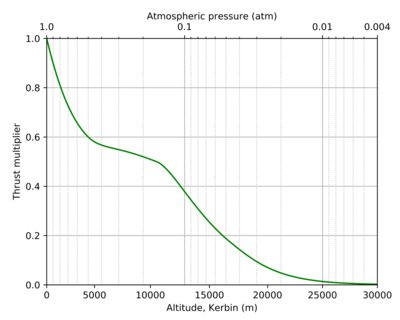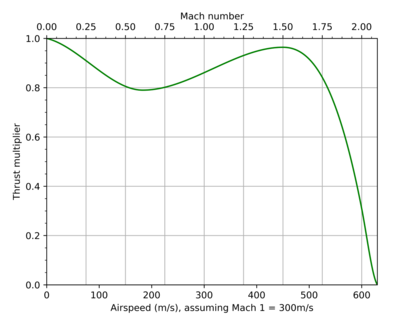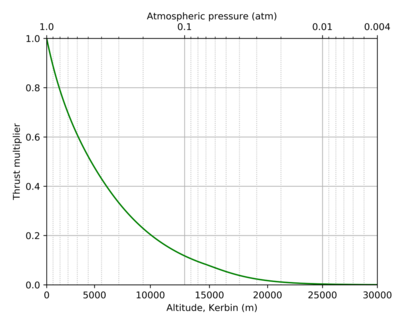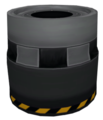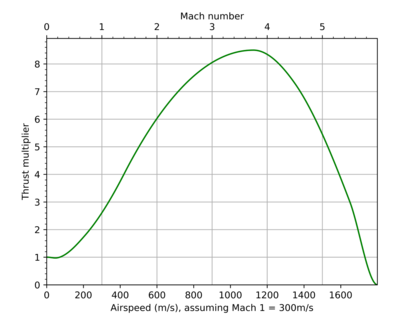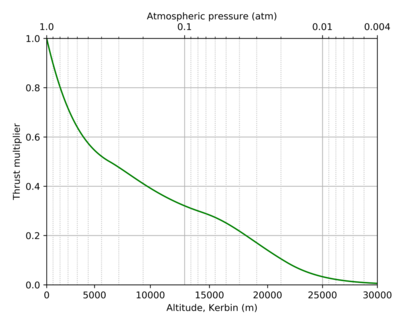Difference between revisions of "J-90 "Goliath" Turbofan Engine"
m |
m (Removed statement regarding engines rotating the same direction causing roll. This is incorrect.) |
||
| Line 18: | Line 18: | ||
*The J-90 is the only jet engine shown with moving fan/turbocompressor. | *The J-90 is the only jet engine shown with moving fan/turbocompressor. | ||
*Although this engine can run at Mach 1.5 with no problems, real-life turbofans can not go past Mach 0.89 usually due to the fact that this puts excessive stress on the mechanical components of the engine and would lead to inevitable engine disintegration. Low-bypass turbofans can go past Mach 1.0 but they quickly lose efficiency as the airspeed increases. | *Although this engine can run at Mach 1.5 with no problems, real-life turbofans can not go past Mach 0.89 usually due to the fact that this puts excessive stress on the mechanical components of the engine and would lead to inevitable engine disintegration. Low-bypass turbofans can go past Mach 1.0 but they quickly lose efficiency as the airspeed increases. | ||
| − | |||
== Changes == | == Changes == | ||
Revision as of 17:02, 14 September 2016
| J-90 "Goliath" Turbofan Engine | ||
| Jet engine by C7 Aerospace Division | ||
| Radial size | Radial mounted | |
| Cost | (total) | 2 600.00 |
| (dry) | 2 600.00 | |
| Mass | (total) | 4.517 t |
| (dry) | 4.517 t | |
| Drag | 0.2 | |
| Max. Temp. | 2000 K | |
| Impact Tolerance | 7 m/s | |
| Research | | |
| Unlock cost | 15 000 | |
| Since version | 1.0.5 | |
| Part configuration | jetEngineBig.cfg | |
| Intake speed | 30 m/s | |
| Intake area | 3 m2 | |
| Maximum thrust | 360.00 kN | |
| Isp | (max) | 12600 s |
| Fuel consumption | 0.58 | |
| Intake air consumption | 132.27 | |
| Thrust vectoring | No | |
| Electricity generated | 16 ⚡/s | |
| Testing Environments | ||
| On the surface | Yes | |
| In the ocean | Yes | |
| On the launchpad | Yes | |
| In the atmosphere | Yes | |
| Sub-orbital | No | |
| In an orbit | No | |
| On an escape | No | |
| Docked | No | |
| Test by staging | Yes | |
| Manually testable | Yes | |
| Intake air | 3 | |
The J-90 "Goliath" Turbofan Engine is a large jet engine added with version 1.0.5 of Kerbal Space Program. It is based on the Rolls-Royce Trent 800 and the GE90 high bypass turbofan engines.
Contents
Usage
It is the only jet engine with large radial size, and built in air intake. This airliner engine's thrust and multiplier curve for velocity make this engine ideal for subsonic large Mk3 airplanes, but also limits its role this purpose. Note that this engine is capable of going into reverse, much like the J-33 "Wheesley" Turbofan Engine, which makes it useful for rapid deceleration during landing and for backing into hangars. Since aircraft are usually built with more than one of this engine, it can also be handy for making sharp turns on the ground, since one engine can be put into reverse while the other continues pushing forwards. However, reversing on one side should be avoided in flight, as severe changes in lift on certain areas of the airframe will occur, possibly leaving the flight unrecoverable.
Product description
| “ | The largest and highest thrust jet engine ever built. This engine works best at low cruising speeds and altitudes. — C7 Aerospace Division |
” |
Trivia
- The J-90 is the only jet engine shown with moving fan/turbocompressor.
- Although this engine can run at Mach 1.5 with no problems, real-life turbofans can not go past Mach 0.89 usually due to the fact that this puts excessive stress on the mechanical components of the engine and would lead to inevitable engine disintegration. Low-bypass turbofans can go past Mach 1.0 but they quickly lose efficiency as the airspeed increases.
Changes
- Initial release
| Part | Velocity curve(s) | Atmosphere curve(s) |
|---|---|---|
|
|
||
|
|
||
|
|
||
|
|
||
|
|
||
|
|
